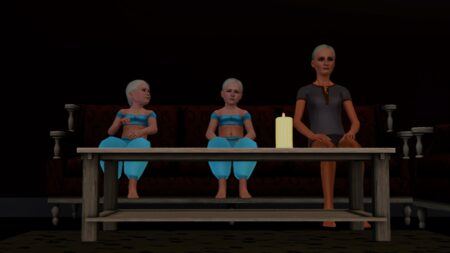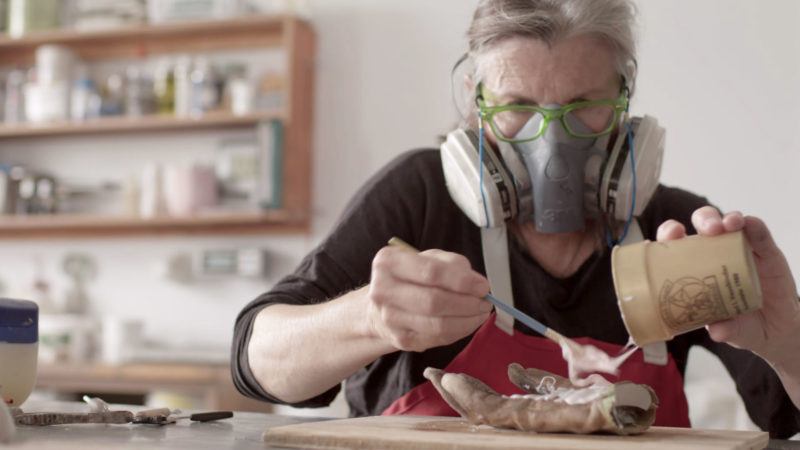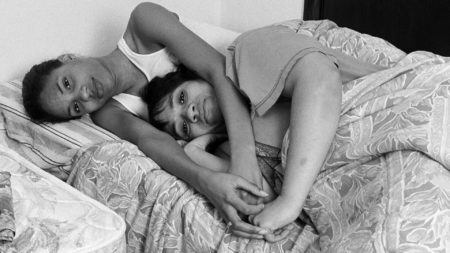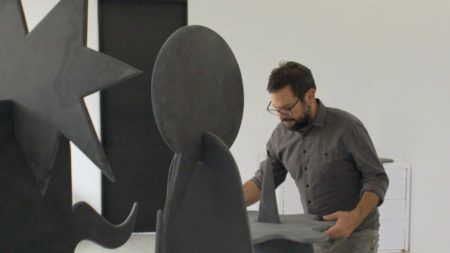Interview
Idea Generator
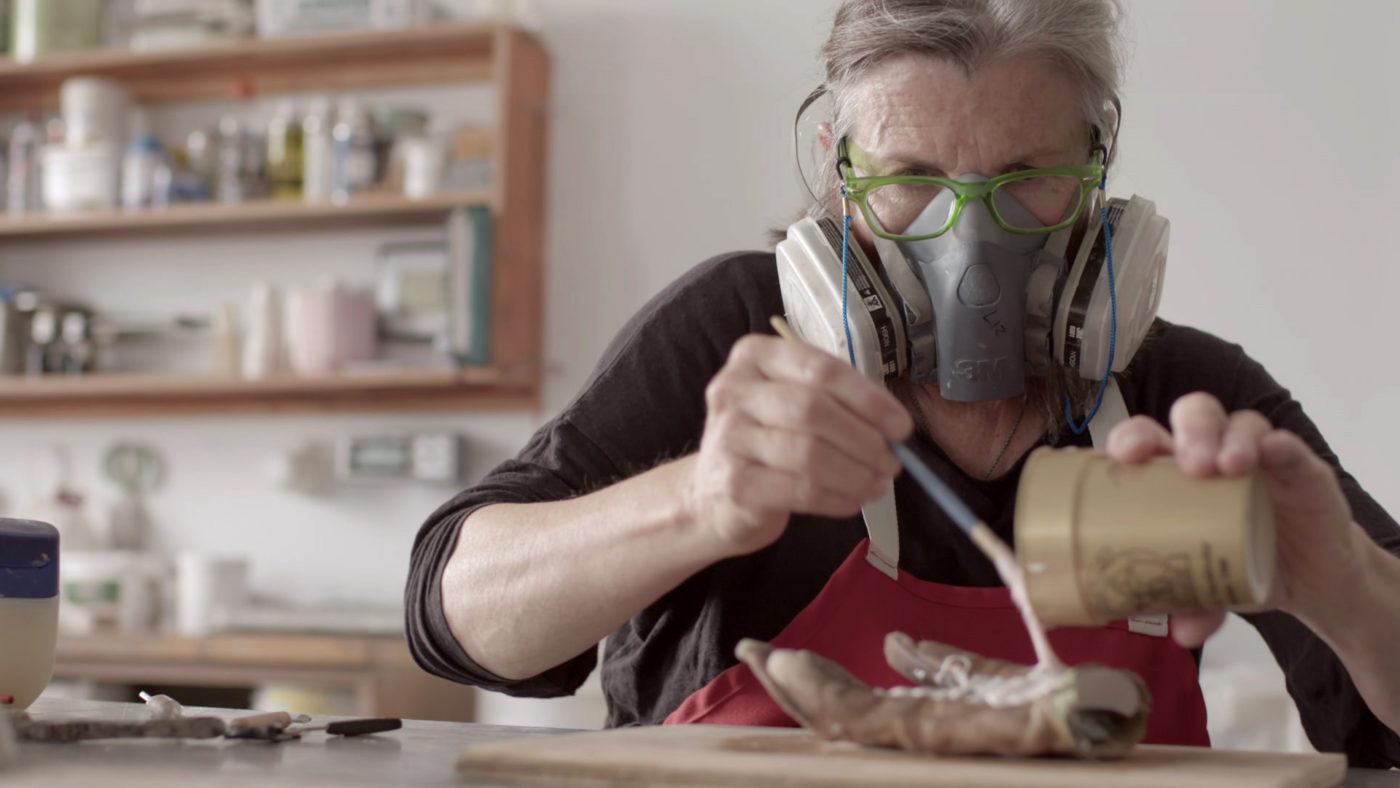
Liz Magor casts a glove in her studio, Vancouver, 2015. Production still from the Art21 "Art in the Twenty-First Century" Season 8 episode, "Vancouver," 2016. © Art21, Inc. 2016.
Liz Magor discusses how she approaches her sculptural practice, how we value objects, and her desire for a quiet studio.
Art21Where do you begin, with a new piece?
MagorWhen I come to the studio, I’m usually working on one track. I try to focus on one work or a group within one idea or response, so that I’m not splitting my attention. Since I’m in the studio every day, the flow of works overlaps; as I’m finishing some work, the new work is already trying to start. The beginning of a work seems to be connected to the ending of another work. As I’m making a work, a variety of things might emerge that I want to pursue.
I wait and see if that desire to do that stays for even a day. I’m not too fussy. Sometimes a really interesting path comes from the most insignificant impulse. I’m not waiting for the big ideas or to be moved. I really don’t like the word passion. I don’t operate from passion; I operate from tiny, below-the-radar responses. I’m looking for latent emotions or responses, or not-quite-conscious or subconscious things: responses or things that get covered over by interests or more exciting events. I need a very quiet studio so that [I can notice] those ever-present-but-not-noisy operations that I’m doing as a human in the world. Those are the things I’m interested in. They’re always there, but they’re not always acknowledged.
A work begins with me acknowledging some thing or response like that: I sense or acknowledge the interest or the awareness. Then I look for the imagery, the form, that seems to match, represent, or have something to do with it, in some way. Then I’ll bring that forward; sometimes that form or image is vague to me. It’s like forgetting somebody’s name but knowing it’s a three-letter name that starts with D—and then you wait, and it comes up.
Sometimes I need to speed that [process] up. I can’t wait for it, so I get on the bike and I go out, usually to Value Village, which is like a big mess, an archive that’s not organized according to my system. As I go through it, the unpredictable always happens. Sometimes things that I see there trigger a sharper, better awareness of what I’m looking for. Value Village is a giant secondhand store. It’s a business; it doesn’t rely on donations from church members; it’s not a charity. It takes and processes a lot of stuff. I’m not looking for special collectibles; the personal part of me has a few ideas about collectibles, but the art part is looking for what the world has dropped off. Everything there is from all cultures, all ages—many different generations of stuff, from the 1950s, the ’40s, the ’30s. It’s like the beach at high tide, when all this flotsam comes up.
While beachcombing, you might find something that’s floated over from Japan; you might find a surprise. You might find something that’s not really special but is kind of beautiful, like a scrap from a boat. Value Village is like that. I use it as a generator, a trigger, or a vast archive.
Before I discovered Value Village, as the world in a capsule, I used to go to the library’s picture files. The librarians don’t do this anymore, but they would clip pictures. Then they would put them in files with categories, like “log cabins” or “horses” or “women with funny hairdos.”
I would go to the library with a vague, unnamed interest. I’d follow this tiny scent, something to do with large noses, and there would be a file called “large noses.” As I go through it, [I see] the variety of large noses is much greater than I could ever imagine, and then everything opens up, and a work begins there, in a way.
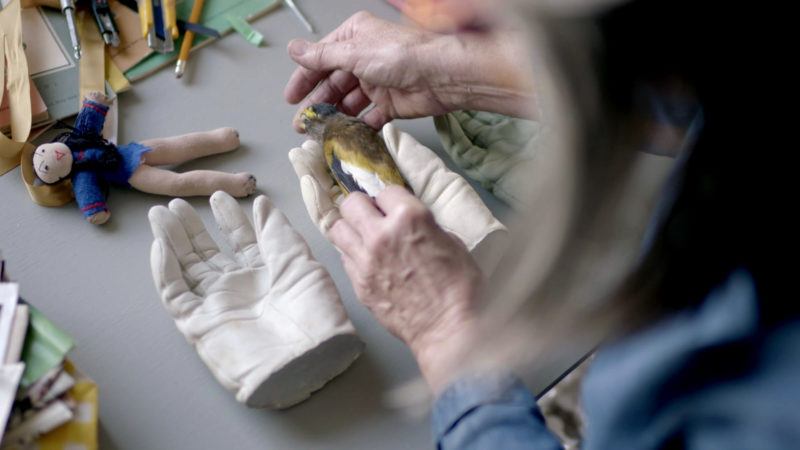
Liz Magor experiments with sculptural compositions in her studio, Vancouver, 2015. Production still from the Art21 “Art in the Twenty-First Century” Season 8 episode, “Vancouver,” 2016. © Art21, Inc. 2016.
How important is the story or the history of the found object to your work?
To a degree, I look for found objects and include them in my work, but sometimes they’re just models. If you’re in a life-drawing class, you don’t know the model’s name; you’re not looking for the person there. You’re looking for the shape of the body and the way the light reflects off the skin, and you’re learning how to draw, or you’re practicing looking and doing because that’s a bit of a skill. Often, when I’m looking and bringing things back [to the studio], their provenance or their life story is not that important.
For example, with the paper-bag works, not any paper bag will work because some have a shiny surface that makes the mold shiny, and I don’t like that. Sometimes the physical characteristics of something are determinate. These works on the wall are using found objects in a way that I haven’t yet explored to this extent. In this case, I’m finding things, or people are giving me things, and again it’s not about that thing; it’s about the status of that thing at this point in time.
Most of [the things I use] are objects with some degree of specialness or uniqueness, or maybe there was only one because it was homemade or handmade. [About the stuffed] polar bear: it comes from the Inuit in the Arctic, who have tried various ways to produce objects that are for sale to the south. They’re not quite for tourists; they’re good cultural artifacts. The Cape Dorset prints were very successful exports but certainly not traditional; the Inuit did not know how to do lithographs before the White man went up there.
The polar bear is part of that [cottage] industry. It can be made at home—you can get fur (it’s not polar-bear fur; it’s probably rabbit fur or could even be cat fur)—and that polar bear is unique. The person who made it might make one hundred in her lifetime, and they’re sold at airports. Maybe they disappear to Germany. They’re not museum objects; they might not even be memory objects. They might be symbols or signs of a lifestyle or conditions that someone admires.
[Visitors] think Canada is snow and freedom and nature, but if they’re in Toronto or Montreal, it’s dirty snow, there’s no freedom, and there’s no nature. When they go to the airport, they don’t want to give up that original thing that they were seeking, and they take a polar bear home. I found a polar bear that was probably purchased for that reason; it’s been used, it’s a bit beaten up, and it’s been cast away. But there’s something about that polar bear: it doesn’t go in the trash. A mass-produced Beanie Baby that’s been overused goes in the trash, but that polar bear goes into a secondhand junk store—not a high-end collectibles store—and I find it there.
Its persistence is interesting to me, and it still has some of the qualities that help it survive, that help it persist. I keep that for some reason.
It was more an object in a category rather than a person tied to a story.
It’s not personal. It’s a condition, status, structure, or system. Objects flow through systems, and we use, waste, and wear them out. [Objects] also send stuff out as they’re going through the system. There’s a give and a take; every object gives something to us, and it takes wear and tear. Then it comes out the other end, called the waste stream. Even the waste stream doesn’t quit; there’s still somebody trying to sell something that’s completely worn out for a nickel. I’m interested in that: there’s still some life left in the thing. It’s a capitalistic life, a life in capitalism, that remains.
I pay for everything. Sometimes the little price ticket says, “50 cents”; then that’s crossed out and it says, “25 cents,” and that’s crossed out, and it says, “free.” The process that’s really interesting is how we value things. For some works, I have found things on the ground, like a used cigarette butt. One year, I was focused on the [street] gutter, looking for crumpled-up cigarette packages, bottle tops—little bits of things that had come from intense experiences.
Cigarettes are very intense [objects] because usually [the person who used them is] addicted. An addiction is well served by the system: there’s this perfect little box, it’s affordable, and the government makes sure it’s still affordable. You can feed your addiction in small increments, which are beautiful, too, because a cigarette—the tube, the length of the cigarette (if I’m talking industrial design)—is one of the most perfectly designed objects. If the tobacco doesn’t have the paper, the tobacco is lost to the wind, and if the paper doesn’t have the tobacco, the paper is [easily] crushable. Together they make a beautiful marriage.
I love the object of a cigarette. [It reveals] a relationship to humans, a system. I find it in its waste state, when that interest, passion, desire, and intensity is spent, and there’s all this stuff. I bring these things into the studio and pay attention to them—which is my main talent, which I’m trying to foster—and through that effort I’ll change their status. I’ll resurrect them from the dead and bring them up into this quite-high-status activity that I’m involved in, turning them into a sculpture. And then they go out [to the world] again.
